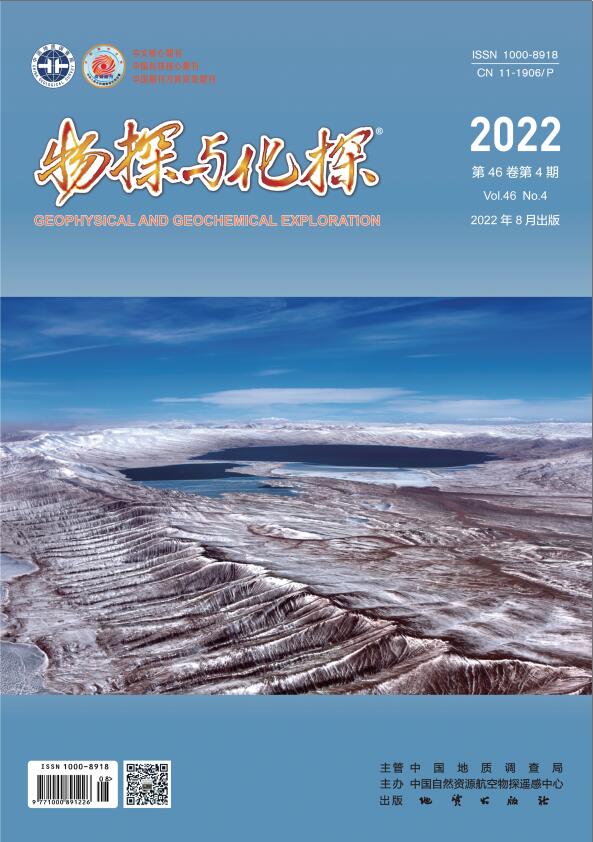| [1] |
闵望, 喻永祥, 陆燕, 等. 苏北盆地地热资源评价与区划[J]. 上海国土资源, 2015, 36(3):90-94,100.
Google Scholar
|
| [2] |
Min W, Yu Y X, Lu Y, et al. Assessment and zoning of geothermalresources in the northern Jiangsu Basin[J]. Shanghai Land &Resources, 2015, 36(3):90-94,100.
Google Scholar
|
| [3] |
陈仲候, 王兴泰, 杜世汉. 工程与环境物探教程[M]. 北京: 地质出版社, 1996.
Google Scholar
|
| [4] |
Chen Z H, Wang X T, Du S H. Engineering and environmental geophysical tutorials[M]. Beijing: Geological Publishing House, 1996.
Google Scholar
|
| [5] |
汪名鹏. 洪泽县老子山地热资源现状及开发利用前景分析[J]. 地下水, 2008, 30(6):53-55,64.
Google Scholar
|
| [6] |
Wang M P. Analysis of present status and prospects of geothermal resources development and utilization in Laozi Mountain area of Hongze County[J]. Ground Water, 2008, 30(6):53-55,64.
Google Scholar
|
| [7] |
胡玉禄, 胡红文, 张景康, 等. 5m地温测量在地热勘探中的应用[J]. 水文地质工程地质, 2003, 30(4),83-85.
Google Scholar
|
| [8] |
Hu Y L, Hu H W, Zhang J K, et al. Application of five-meter ground temperature survey to the geothermal exploration[J]. Hydrogeology & Engineering Geology, 2003, 30(4),83-85.
Google Scholar
|
| [9] |
汪名鹏, 韩光海, 顾萍. 洪泽县老子山地热矿区地热资源赋存特征[J]. 煤田地质与勘探, 2009, 37(2):47-50,54.
Google Scholar
|
| [10] |
Wang M P, Han G H, Gu P. Geololgical features of geothermal resource in Laozi Mountain area of Hongze County[J]. Coal Geology & Exploration, 2009, 37(2):47-50,54.
Google Scholar
|
| [11] |
谭静强, 琚宜文, 侯泉林, 等. 淮北煤田宿临矿区现今地温场分布特征及其影响因素[J]. 地球物理学报, 2009, 52(3) : 732-739.
Google Scholar
|
| [12] |
Tan J Q, Ju Y W, Hou Q L, et al. Distribution characteristics and influence factors of present geo-temperature field in Su-Lin mine area, Huaibei coalfield[J]. Chinese Journal Of Geophysics, 2009, 52(3) : 732-739.
Google Scholar
|
| [13] |
杨峰田, 庞忠和, 王彩会, 等. 苏北盆地老子山地热田成因模式[J]. 吉林大学学报:地球科学版, 2012, 42(2),468-475.
Google Scholar
|
| [14] |
Yang F T, Pang Z H, Wang C H, et al. Genesis model of laozishan geothermal field, Subei basin[J]. Journal of Jilin University:Earth Science Edition, 2012, 42(2),468-475.
Google Scholar
|
| [15] |
罗璐, 庞忠和, 杨峰田, 等. 江苏老子山地热田成因分析[C]// 中国地球物理2010—中国地球物理学会第二十六届年会、中国地震学会第十三次学术大会论文集, 2010.
Google Scholar
|
| [16] |
Luo L, Pang Z H, Yang F T, et al. Cause analysis of Laozi Mountain thermal field in Jiangsu Province[C]// China Geophysics 2010—26th Annual Meeting of China Geophysical Society,Papers Collection of 13th Academic Conference of China Seismological Society, 2010.
Google Scholar
|






 DownLoad:
DownLoad: